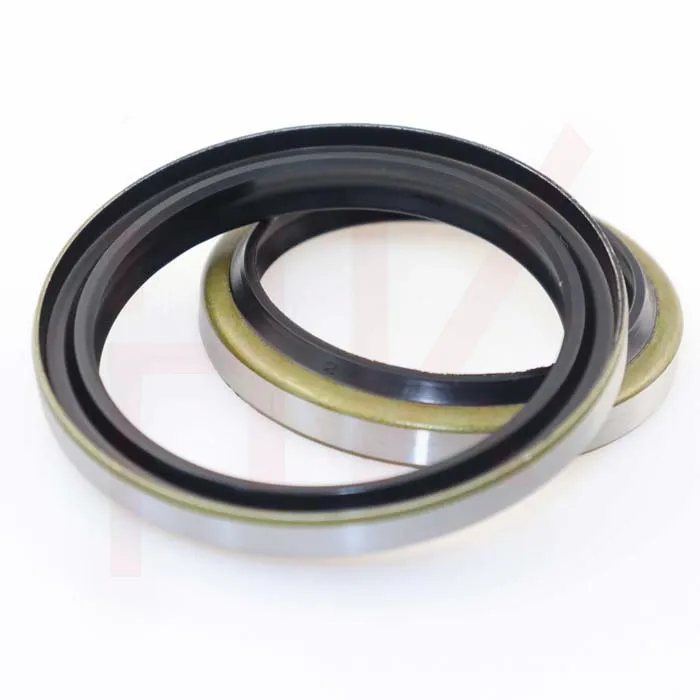Oct . 12, 2024 02:59 Back to list
Understanding Wiper Seals and Their Importance in Automotive Maintenance
Understanding Wiper Seals Function, Importance, and Maintenance
Wiper seals, often overlooked in the intricate world of machinery and equipment, play a crucial role in ensuring the efficient operation of hydraulic and pneumatic systems. These seals are designed to prevent contaminants from entering machinery while keeping fluid leakage to a minimum. Understanding their functions, importance, and how to maintain them can enhance the longevity and performance of your equipment.
What is a Wiper Seal?
Wiper seals, sometimes referred to as dust seals, are a type of sealing solution typically found in hydraulic cylinder assemblies. They sit at the outermost part of the cylinder and serve the primary purpose of scraping off dirt, dust, and other contaminants that accumulate on the rod of the cylinder. By doing so, they protect the internal components from wear and damage, which could be caused by these foreign particles.
Function and Importance
The primary function of a wiper seal is to ensure that the hydraulic or pneumatic system operates smoothly by preventing external contaminants from entering the system. This is particularly important for machinery used in harsh environments where dust, dirt, and moisture are prevalent. By keeping these contaminants at bay, wiper seals contribute to
1. Extended Equipment Life Contaminants can cause significant wear and tear on seals and other critical components. By preventing foreign particles from entering, wiper seals can significantly enhance the lifespan of not only the seals themselves but the entire hydraulic or pneumatic system.
2. Improved Performance Systems that are kept clean from debris are less prone to malfunctions. A smooth operation of hydraulic cylinders translates to improved performance, efficiency, and productivity of the machinery as a whole.
3. Minimized Leakage Wiper seals help reduce the chances of fluid leaking out of the system. Fluid leakage can lead to inefficiencies and loss of pressure, which can impact the operation and increase operating costs.
Types of Wiper Seals
Wiper seals are available in various shapes and materials, such as rubber, polyurethane, and PTFE, each chosen based on the specific application and operating conditions. Some common types include
wiper seal

- Single Lip Wiper Seals These are used in applications that require a simple design with basic contaminant exclusion capabilities.
- Double Lip Wiper Seals With two sealing surfaces, these wipers provide enhanced protection against contamination and are often used in demanding environments.
- V-Rings These versatile seals can serve as wipers while also preventing fluid from leaking out. They are suitable for compact spaces and applications where space is limited.
Maintenance and Replacement
Maintaining wiper seals is crucial for the optimal performance of your equipment. Regular inspection can help identify signs of wear or damage, such as cracks, tears, or deformation. Here are some tips for maintaining wiper seals
1. Routine Inspection Regularly check for any visible signs of wear or damage on wiper seals, especially in dusty or abrasive environments.
2. Cleaning Keep the surrounding area clean to reduce the amount of debris that may accumulate on the seals. This can involve periodically wiping down the seals with a clean cloth.
3. Proper Installation Ensure that seals are correctly installed during maintenance to prevent premature wear or failure. Follow manufacturer guidelines for proper installation techniques.
4. Timely Replacement When wear or damage is detected, replace the seals promptly to avoid further damage to the system.
Conclusion
In conclusion, wiper seals are an essential component in maintaining the functionality and longevity of hydraulic and pneumatic systems. Their ability to keep contaminants at bay directly influences the performance and lifespan of the machinery. By understanding their importance and implementing regular maintenance, you can ensure that your equipment operates smoothly and efficiently for years to come. Regular attention to these small yet mighty components can lead to significant benefits in overall machinery performance.
-
TCN Oil Seal Metal Ring Reinforcement for Heavy Machinery
NewsJul.25,2025
-
Rotary Lip Seal Spring-Loaded Design for High-Speed Applications
NewsJul.25,2025
-
Hydraulic Cylinder Seals Polyurethane Material for High-Impact Jobs
NewsJul.25,2025
-
High Pressure Oil Seal Polyurethane Coating Wear Resistance
NewsJul.25,2025
-
Dust Proof Seal Double Lip Design for Construction Equipment
NewsJul.25,2025
-
Hub Seal Polyurethane Wear Resistance in Agricultural Vehicles
NewsJul.25,2025
-
The Trans-formative Journey of Wheel Hub Oil Seals
NewsJun.06,2025
Products categories
















